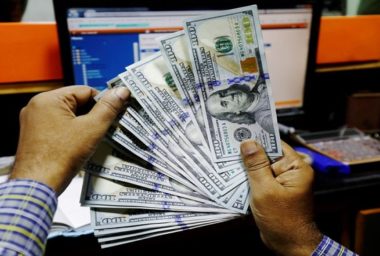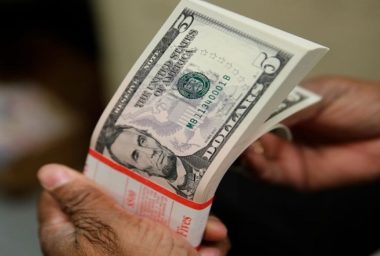-
Authoradmin
-
Comments0 Comments
-
Category
By Tommy Wilkes
LONDON (Reuters) – Price swings in the world’s most-traded currencies have plummeted as a dovish shift by major central banks reversed a brief revival at the end of 2018, and traders are hoping events such as Brexit will shake up moribund markets next month.
Volatility is crucial for traders, who can wring out more profits when prices move wildly. But the euro/dollar exchange rate — the world’s most-traded currency pair — is stuck in its narrowest quarterly trading range since the euro’s inception.
Any negative impact on the dollar from the pause in the U.S. Federal Reserve’s interest-rate-hiking cycle has been blunted by a cautious European Central Bank faced with a struggling euro zone economy, leaving the exchange rate treading water.
U.S. President Donald Trump’s move this week to delay tariffs on Chinese goods, welcomed by investors eager for an end to trade conflicts, should also suppress volatility.
So far in 2019, euro/dollar has traded within a range of 3.365 cents — between $1.1570 and $1.1234. According to Societe Generale’s Kit Juckes, the average quarterly range has been 9 cents, hitting a record 24 cents a decade earlier. In the fourth quarter of 2018 the range was 4.12 cents.
Graphic: Euro vs the U.S. dollar – https://tmsnrt.rs/2U93OzV
It’s a similar story elsewhere. Dollar/yen volatility — vol in traders’ parlance — is nearly a third of early January levels. The implied volatility curve — a measure of expected price swings in the currency pair — is the lowest in five years.
Even sterling, highly sensitive to Brexit headlines, has seen volatility fall to two-thirds of November levels.
Deutsche Bank’s Currency Volatility Index has dropped to 6.89, its lowest since July 2018, from levels of 9 as recently as Jan. 3. The index averaged above 10 for much of 2015-2016.
Graphic: Currency volatility plunges – https://tmsnrt.rs/2Ewaumr
Now traders are hoping that a series of events in March — Brexit, central bank meetings in the United States, euro zone and Japan and a potential flare-up in global trade disputes — will lift volatility.
But while the possibility of a delay in Britain’s March 29 departure date from the European Union has lifted short-term sterling volatility expectations, wild swings further out are seen as unlikely.
Implied one-month and three-month sterling-dollar vol remain well below late-2018 levels. It’s a similar story in euro/sterling.
Graphic: Volatility expectations – https://tmsnrt.rs/2BSb3oA
Investors are even less confident about large euro/dollar moves, with one-month implied vol stuck near 14-month lows. The three-month contract is around its lowest since August 2014.
Options markets imply euro/dollar will move in a range of 1.5 cents over the next month — keeping it firmly between $1.12 and $1.15.
Recent Comments
- Starlight Herot on Euro Higher on German Data, Sterling Edges Lower
- Frost Dragont on Euro Higher on German Data, Sterling Edges Lower
- Gwinnettt on Euro Higher on German Data, Sterling Edges Lower
- Vanessat on Euro Higher on German Data, Sterling Edges Lower
- Christinet on Euro Higher on German Data, Sterling Edges Lower
Archives
- April 2025
- March 2025
- February 2025
- January 2025
- December 2024
- November 2024
- October 2024
- February 2024
- July 2023
- July 2021
- May 2021
- March 2021
- February 2021
- September 2020
- May 2020
- February 2020
- December 2019
- November 2019
- October 2019
- September 2019
- August 2019
- July 2019
- June 2019
- May 2019
- April 2019
- March 2019
- February 2019
- January 2019
- December 2018
- November 2018
- October 2018
- September 2018
- August 2018
- July 2018
- June 2018
- May 2018
- April 2018
- March 2018
- February 2018
- January 2018
- December 2017
- November 2017






